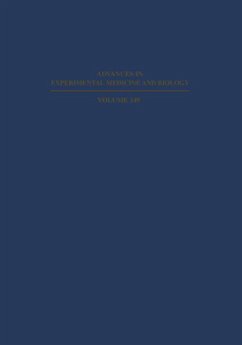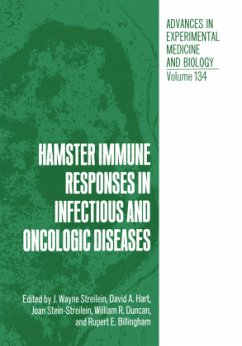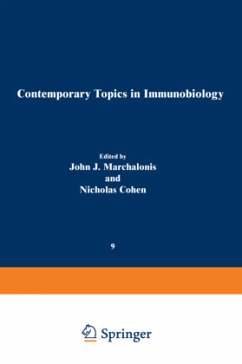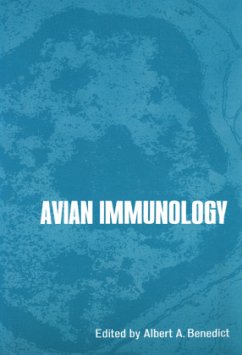
Current Trends in Histocompatibility
Volume 2 Biological and Clinical Concepts
Herausgegeben von Reisfeld, Ralph

PAYBACK Punkte
39 °P sammeln!
Information about histocompatibility antigens is expanding so rapidly that of all advances. In these volumes, we have it is difficult to remain abreast made an effort to bring together the most current work on topics that have generated most of the recent advances and discussions. We have asked each author to present and interpret his most current work, and we have judiciously refrained from imposing our own prejudices and viewpoints. Although there is obvious overlap in some individual topics, we have encouraged this to provide the reader with as many different and some times opposing viewpoi...
Information about histocompatibility antigens is expanding so rapidly that of all advances. In these volumes, we have it is difficult to remain abreast made an effort to bring together the most current work on topics that have generated most of the recent advances and discussions. We have asked each author to present and interpret his most current work, and we have judiciously refrained from imposing our own prejudices and viewpoints. Although there is obvious overlap in some individual topics, we have encouraged this to provide the reader with as many different and some times opposing viewpoints as possible. This approach will, we hope, give a broad overview of current ideas in the field. We wish to thank all contributors for their timely and exciting manu scripts, and we sincerely hope that the reader will benefit from these volumes. R. A. Reisfeld S. Ferrone La Jolla vii Contents I. Role of Histocompatibility Antigens in Cell-Cell Interaction Chapter 1 Histocompatibility Antigens and the T-Cell Repertoire . . . . . . . . . . . . . . 3 Harald von Boehmer 1. Introduction. . . . . . . . . . . . . . . . . . . . . . . . . . . . . . . . . . . . . . . . . . . . . . . . . 3 2. H-2 Restriction . . . . . . . . . . . . . . . . . . . . . . . . . . . . . . . . . . . . . . . . . . . . . . 3 2. 1. H-2 Restriction of T Cells. . . . . . . . . . . . . . . . . . . . . . . . . . . . . . . . 3 2. 2. B Cells Are Not H-2-Restricted . . . . . . . . . . . . . . . . . . . . . . . . . . . 5 3. H-2-Linked Ir Genes . . . . . . . . . . . . . . . . . . . . . . . . . . . . . . . . . . . . . . . . . 5 3. 1. Influence on the T-Cell Repertoire . . . . . . . . . . . . . . . . . . . . . . . . 5 3. 2. H-2-Gene Complementation . . . . . . . . . . . . . . . . . . . . . . . . . . . . . . 7 3. 3. TheB-Cell Repertoire Is Not Directly Influenced by H-2-Linked Ir Genes . . . . . . . . . . . . . . . . . . . . . . . . . . . . . . . . . . . 12 4. Frequency of Cells Specific for Allogeneic H-2 Antigens . . . . . . . . 12 4. 1. Allospecific T Cells. . . . . . . . . . . . . . . . . . . . . . . . . . . . . . . . . . . . . 12 4. 2. Allospecific B Cells . . . . . . . . . . . . . . . . . . . . . . . . . . . . . . . . . . . .














